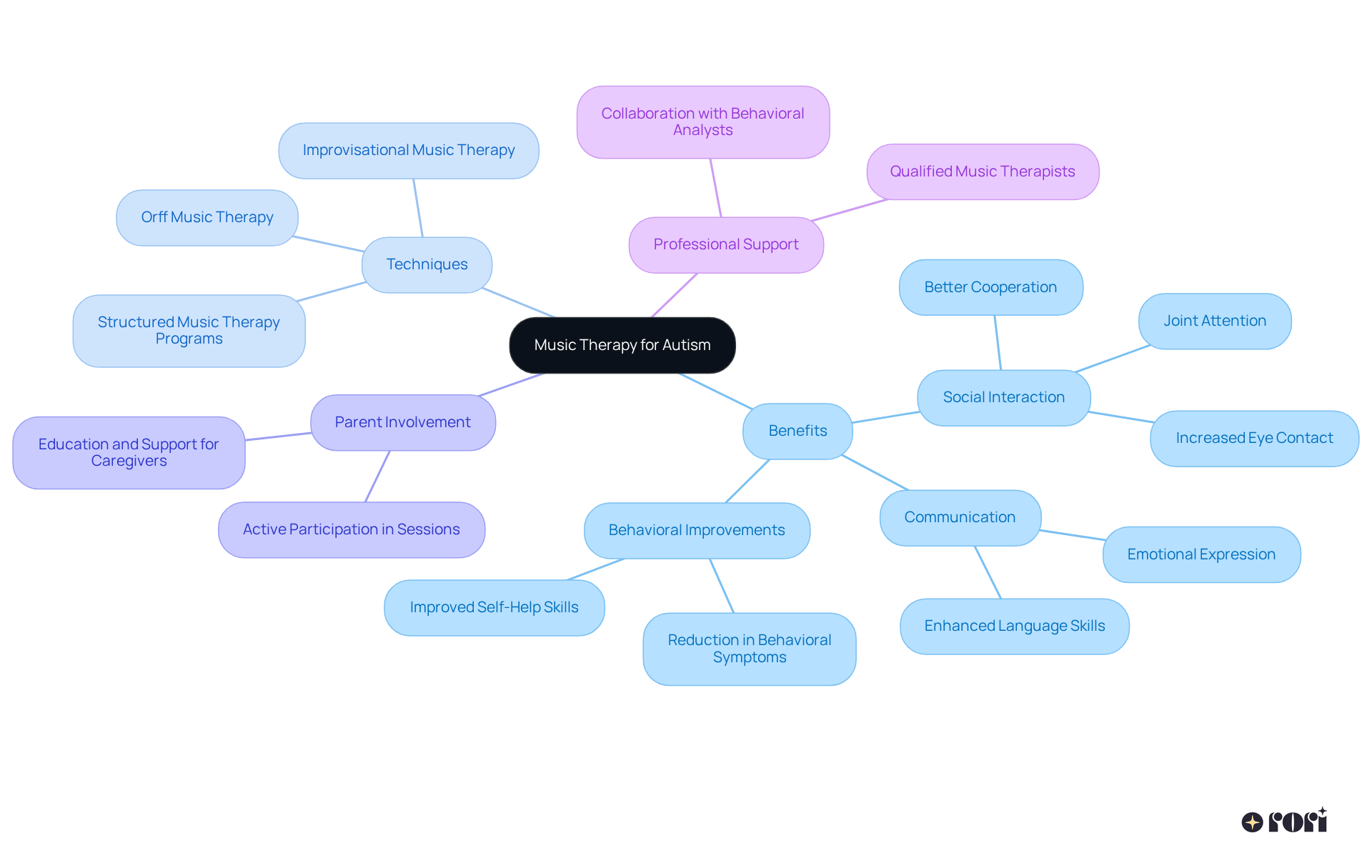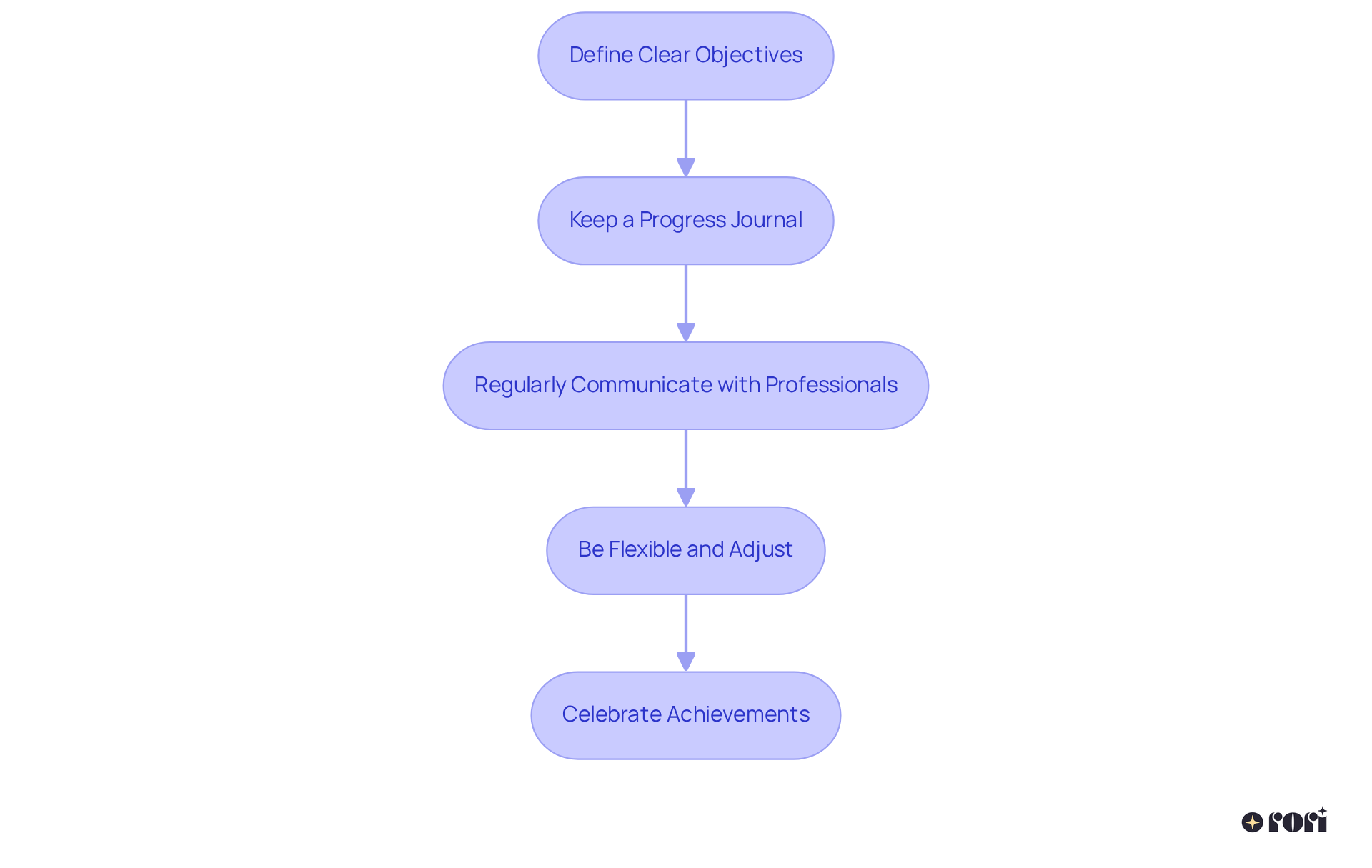Music therapy can be a wonderful way to support children with autism right at home! By enhancing communication, social skills, and emotional expression through fun musical activities, families can create a nurturing environment. 🎶
Imagine setting up a cozy, sound-friendly space where your child feels comfortable. Engaging in interactive music activities can lead to significant improvements in behavioral symptoms and social interactions. It’s amazing how music can bridge gaps and foster connections!
Let’s explore this together! With practical steps and supportive evidence, you can make a real difference in your child’s life. We’re here to help you every step of the way!
Music therapy emerges as a transformative approach for children with autism, offering a unique avenue for enhancing communication, social interaction, and emotional expression. By harnessing the power of sound, families can create supportive environments that promote developmental growth and emotional well-being. 🌟
However, integrating these therapeutic techniques into daily routines at home can be a bit challenging. How can caregivers best implement music therapy strategies to foster their child's progress and navigate the complexities of autism? Let’s explore this together!
Musical treatment is a clinical and evidence-based method that uses musical interventions to achieve personalized goals within a therapeutic relationship. For children with autism, understanding how music therapy helps autism can really enhance social interaction, communication, and emotional expression. Studies show that auditory treatment boosts skills like shared attention, social interaction, and play—making it a vital resource for parents eager to support their children's development.
In fact, a meta-analysis of 14 studies found a significant improvement in behavioral symptoms, with a combined effect size of -1.92. This highlights just how effective auditory intervention can be in improving overall behavior in individuals with autism. By engaging with sound, young people can find a safe and structured space to express themselves, leading to better behavior and mental well-being.
Moreover, music interventions foster joint attention and emotional connection. Practitioners use techniques that enhance interaction and engagement, which is crucial. This therapeutic relationship has been identified as a key predictor of changes in ASD symptom severity. At Rori Care, we emphasize the importance of caregiver education. We equip parents with the knowledge and skills to support their children's behavioral goals through active involvement and data collection.
Our group counseling sessions, led by skilled professionals, enhance communication and relationships among youth, creating a supportive environment for social skills development. Additionally, we offer personal counseling and program development services to help families overcome challenges and promote youth growth. Overall, how music therapy helps autism serves as a powerful tool for improving communication and social skills in children, paving the way for emotional expression and enriched social interactions. Let’s explore this together!

To effectively implement music therapy techniques at home, let’s consider some simple steps:
Establish a Sound-Friendly Space: Create a cozy spot in your home dedicated to auditory activities. This area should be free from interruptions, allowing your child to focus on the sounds. A well-organized space significantly boosts comfort and concentration during musical activities, supporting the professional help they receive.
Engage in Interactive Music Activities: Use instruments like drums, shakers, or even household items to create fun rhythmic patterns. Encourage your little one to imitate or respond to the beat, which helps develop motor skills and coordination. Research shows how music therapy helps autism by enhancing joint attention and social interaction in children with autism by 30%. By participating actively, caregivers reinforce the ABA principles learned in their training, promoting consistency in their child’s behavioral goals.
Incorporate Music into Daily Routines: Singing can make daily tasks like brushing teeth or making the bed much more enjoyable! This not only adds fun to routines but also encourages language development and emotional regulation. Singing during transitions provides ongoing support while building essential skills, allowing caregivers to make choices that positively impact their child’s progress.
Utilize Calming Playlists: Curate playlists filled with gentle melodies and soft vocals to help soothe your child during stressful moments. This is especially useful during transitions or challenging tasks, as it illustrates how music therapy helps autism by enhancing emotional control and reducing anxiety in youth. Caregivers armed with this knowledge can better support their children during these times, improving family dynamics.
Encourage Creative Expression: Let your child express themselves through sound! This could mean improvising, songwriting, or simply moving to the music. Such activities promote emotional regulation and self-expression, offering a safe space for feelings that may be hard to put into words. Engaging in musical activities deepens the connection between parents and children, strengthening family bonds. As Talia Smith-Muller beautifully puts it, 'Music can help illustrate how music therapy helps autism by enabling autistic individuals to access and communicate their emotions in ways that transcend language.'
Let’s explore this together! We’re here to help you every step of the way!
To effectively evaluate progress and adjust music therapy approaches, let’s consider a few friendly steps together:
Define Clear Objectives: Start your musical healing journey by crafting specific, measurable aims tailored to your child's unique needs. These goals might focus on how music therapy helps autism by enhancing communication skills, improving social interactions, or even reducing anxiety levels.
Keep a Progress Journal: Maintaining a detailed journal can be a game-changer! Record your child's reactions to various music activities, noting any noticeable improvements in behavior, communication, or emotional regulation. This journal will be invaluable for reflection and necessary adjustments to your therapy plan.
Regularly Communicate with Professionals: Open communication with your therapist is key. Share your observations and insights, and don’t hesitate to seek their expertise on how to modify techniques or goals based on your evolving progress.
Be Flexible and Adjust: As your child grows, be ready to modify your approach to sound healing. Flexibility in activities and goals is crucial to align with their current interests and needs.
Celebrate Achievements: Remember to recognize and celebrate your child's progress, no matter how small it may seem. Positive reinforcement can significantly motivate them to engage more deeply in music therapy and continue their skill development.
Let’s explore this together and support each other on this journey!

Music therapy shines as a transformative tool for supporting children with autism. It offers a structured yet creative way to boost communication, social interaction, and emotional expression. By tapping into the magic of music, caregivers can create an environment that nurtures personal growth and strengthens family bonds, making the therapeutic journey more engaging and effective.
To help you get started, this article shares essential steps for implementing music therapy techniques at home. Think about:
Each of these strategies is designed to promote skill development and emotional regulation, showcasing the profound impact music can have on children with autism. Plus, by evaluating progress through clear objectives and open communication with professionals, you can ensure that the therapy remains responsive to your child's evolving needs.
Ultimately, integrating music therapy into your home isn’t just about honing specific skills; it’s about enriching the lives of children and their families. By embracing these techniques and celebrating every milestone, caregivers can foster a nurturing atmosphere that empowers children to express themselves and thrive. The significance of music therapy in autism is truly remarkable—its ability to foster connection and understanding is a vital resource that deserves exploration and implementation in every home. Let’s explore this together!
What is music therapy?
Music therapy is a clinical and evidence-based method that uses musical interventions to achieve personalized goals within a therapeutic relationship.
How does music therapy benefit children with autism?
Music therapy enhances social interaction, communication, and emotional expression in children with autism. It helps improve skills like shared attention, social interaction, and play.
What evidence supports the effectiveness of music therapy for autism?
A meta-analysis of 14 studies found a significant improvement in behavioral symptoms with a combined effect size of -1.92, indicating the effectiveness of auditory intervention in improving overall behavior in individuals with autism.
How does music therapy promote emotional expression in children with autism?
Engaging with sound provides a safe and structured space for young people to express themselves, leading to better behavior and mental well-being.
What role do practitioners play in music therapy for autism?
Practitioners use techniques that enhance interaction and engagement, which are crucial for fostering joint attention and emotional connection, and they establish a therapeutic relationship that predicts changes in ASD symptom severity.
How does Rori Care support parents in music therapy?
Rori Care emphasizes caregiver education, equipping parents with knowledge and skills to support their children's behavioral goals through active involvement and data collection.
What additional services does Rori Care offer?
Rori Care offers group counseling sessions led by skilled professionals, personal counseling, and program development services to help families overcome challenges and promote youth growth.
What is the overall impact of music therapy on children with autism?
Music therapy serves as a powerful tool for improving communication and social skills in children, paving the way for emotional expression and enriched social interactions.